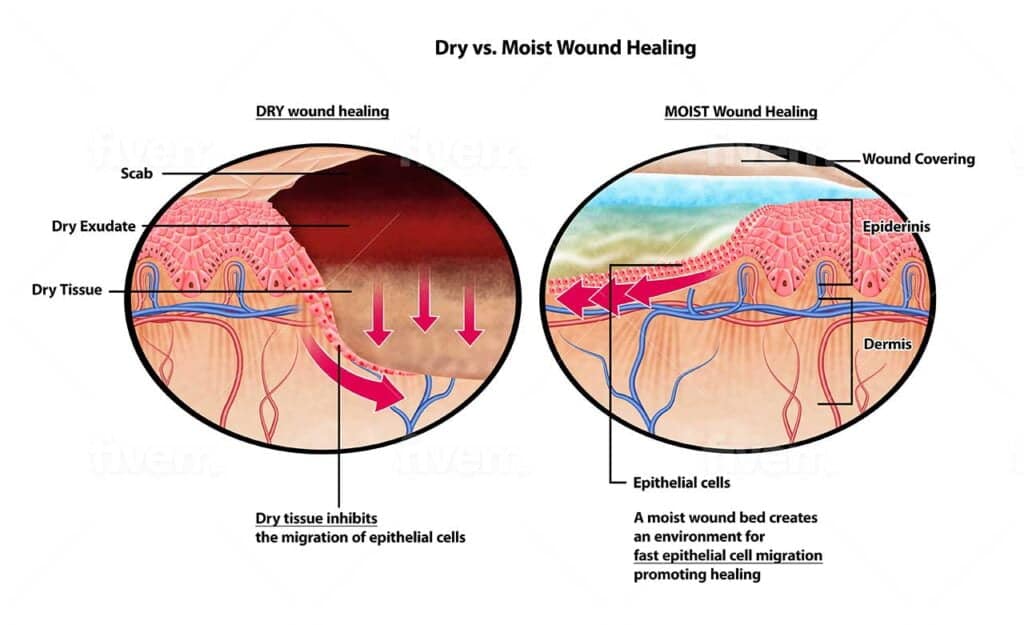
Diabetes is a chronic condition affecting millions of people worldwide. Unfortunately, one of the most common and concerning complications of diabetes is the development of diabetic ulcers, particularly in the feet. Diabetic ulcers, also known as diabetic foot ulcers or diabetic sores, can lead to severe infections and even amputations if not correctly managed. This article will delve into the causes, symptoms, and preventive measures associated with diabetic ulcers, emphasizing the importance of early detection and effective diabetic foot care.
Understanding Diabetic Ulcers:
diabetic sores occur on the feet of individuals with diabetes. They are primarily caused by a combination of factors, including poor blood circulation, nerve damage (neuropathy), and impaired immune function. Diabetes can lead to peripheral arterial disease (PAD), where blood flow to the extremities is compromised, making it difficult for wounds to heal correctly. Additionally, neuropathy reduces sensation in the feet, making it challenging for individuals to detect injuries or areas of excessive pressure. Minor cuts, blisters, or calluses can quickly develop into severe ulcers when left untreated.
Signs and Symptoms of diabetic ulcer
Maintain optimal blood glucose levels: Consistently monitoring and controlling blood sugar levels are essential in preventing complications associated with diabetic ulcer. Proper management helps improve blood flow and reduces the risk of neuropathy, ultimately decreasing the likelihood of developing ulcers.
Regular foot examinations: Individuals with diabetes should inspect their feet daily for signs of redness, swelling, or injury. It is also crucial to check for ingrown toenails, calluses, or changes in skin color. It is essential to seek medical attention promptly if any abnormalities are detected.
Proper foot care: Keeping the diabetes feet clean and dry is essential to prevent infections. Regularly wash feet with mild soap and warm water, drying them thoroughly, especially between the toes. Moisturizing the feet can also help prevent dry, cracked skin.
Keeping the diabetes feet clean and dry is essential to prevent infections.
Proper footwear: Wearing comfortable, well-fitting shoes is vital for individuals with diabetes. Shoes should provide adequate support, have a wide toe box, and be made of breathable materials. Avoiding high heels, tight shoes, and open-toed sandals is recommended, as they can increase the risk of foot injuries.
Regular podiatry visits: Consulting with a podiatrist or a foot care specialist is highly recommended for individuals with diabetes. Regular check-ups can help identify potential issues early on and provide guidance on appropriate foot care techniques.
Treatment and Management:
If a diabetic ulcer does develop, prompt and appropriate treatment is crucial to prevent complications. Treatment options may include:
Wound care: Cleaning the wound with a mild antiseptic solution, applying appropriate dressings, and protecting it with a sterile bandage can promote healing and prevent infection.
Offloading pressure: In cases where pressure on the affected area is hindering healing, offloading techniques such as using special footwear, casts, or orthotic devices can help relieve pressure and promote faster healing.
Antibiotics: If diabetic foot ulcer is present or suspected, a healthcare professional may prescribe antibiotics to prevent the infection from spreading.
Surgical interventions: In severe cases, surgical interventions such as debridement (removal of dead tissue) or even amputation may be necessary to prevent the spread of infection.
Conclusion:
Diabetic ulcers pose a significant risk to individuals with diabetes, but their occurrence can be minimized with proper understanding and proactive measures. Regular foot care, early detection of abnormalities, and timely treatment can make a substantial difference in preventing complications associated with diabetic foot ulcers. By actively managing diabetes and adopting appropriate preventive measures, individuals can maintain healthy feet and reduce the risk of developing ulcers, ultimately improving their quality of life.